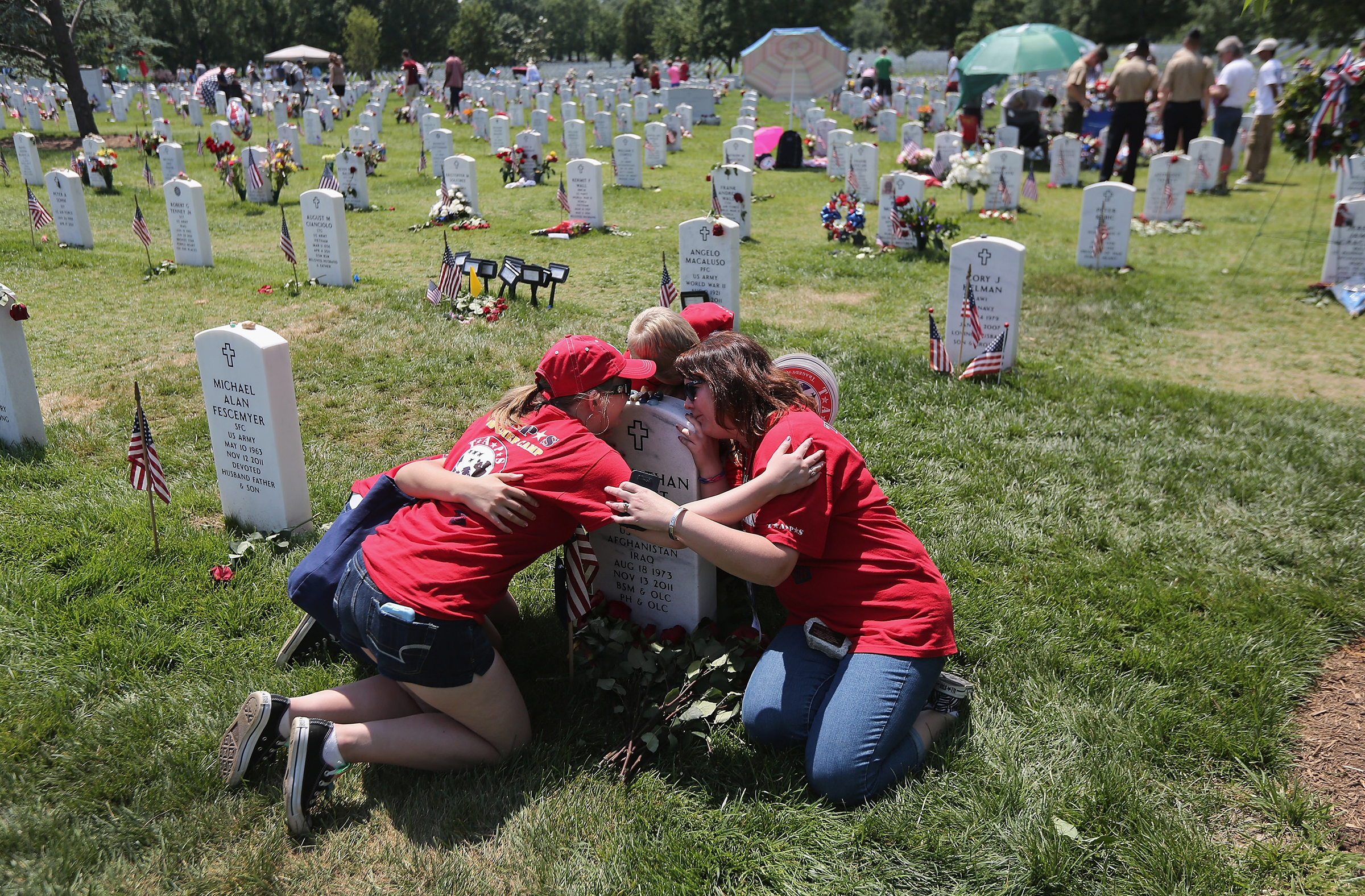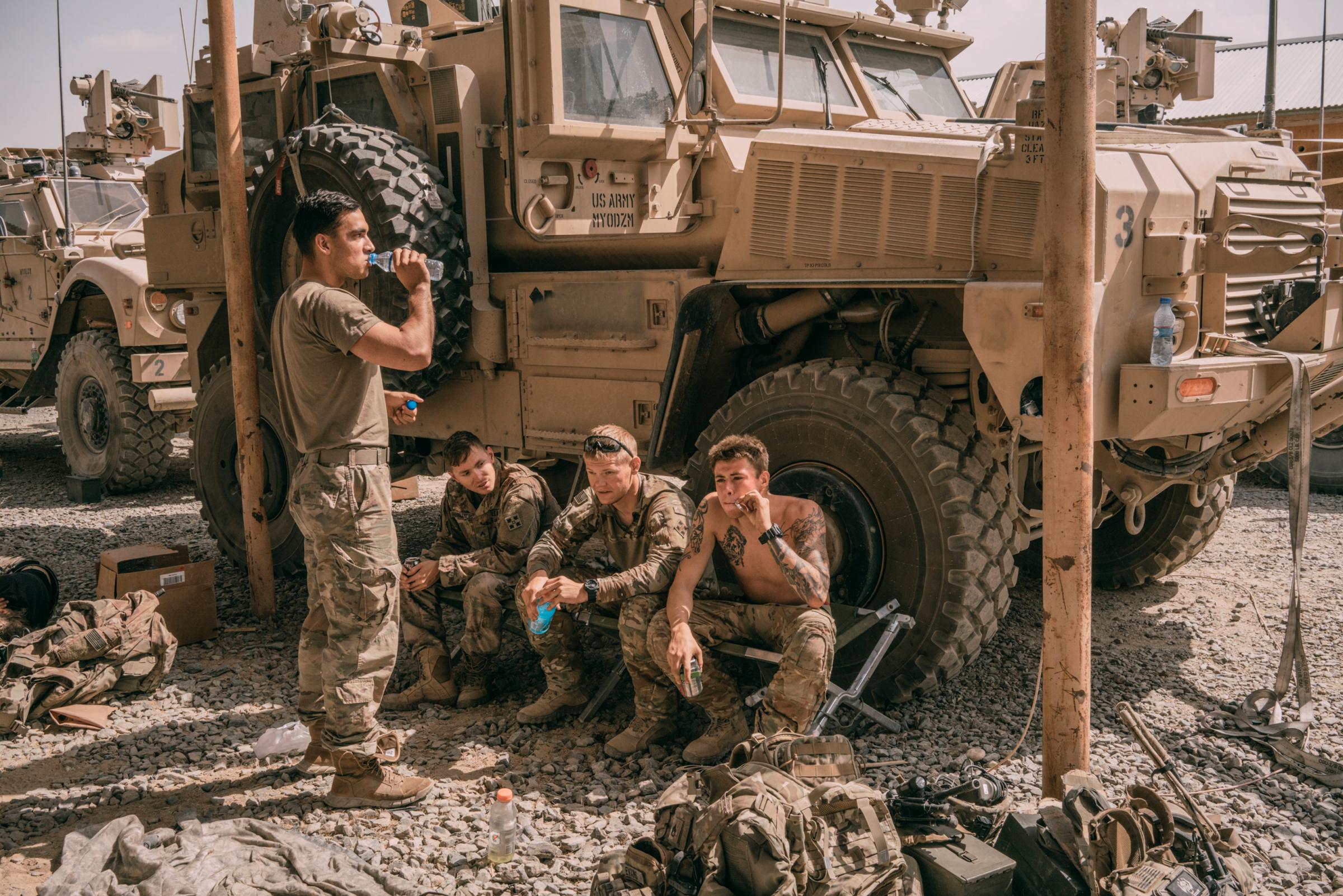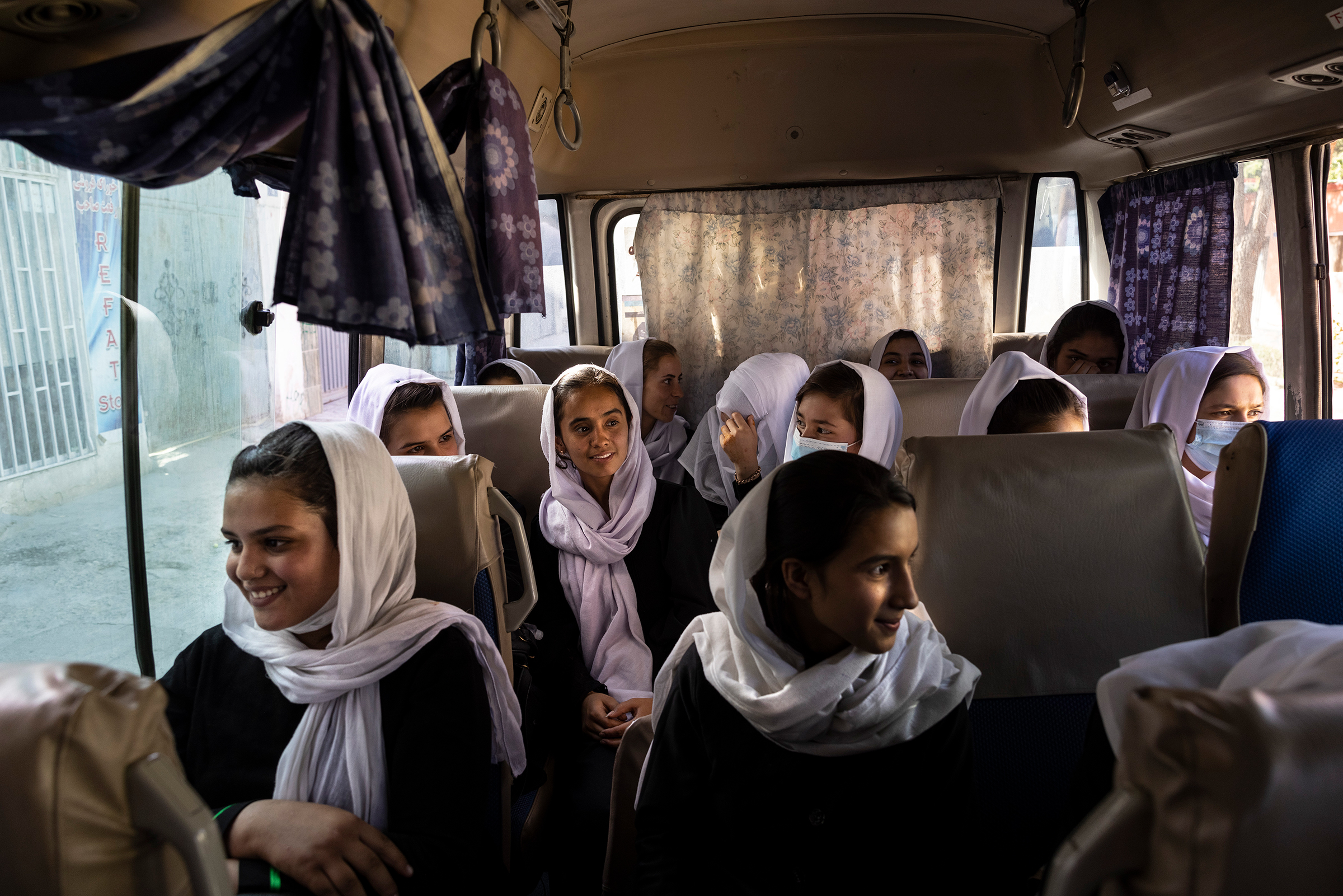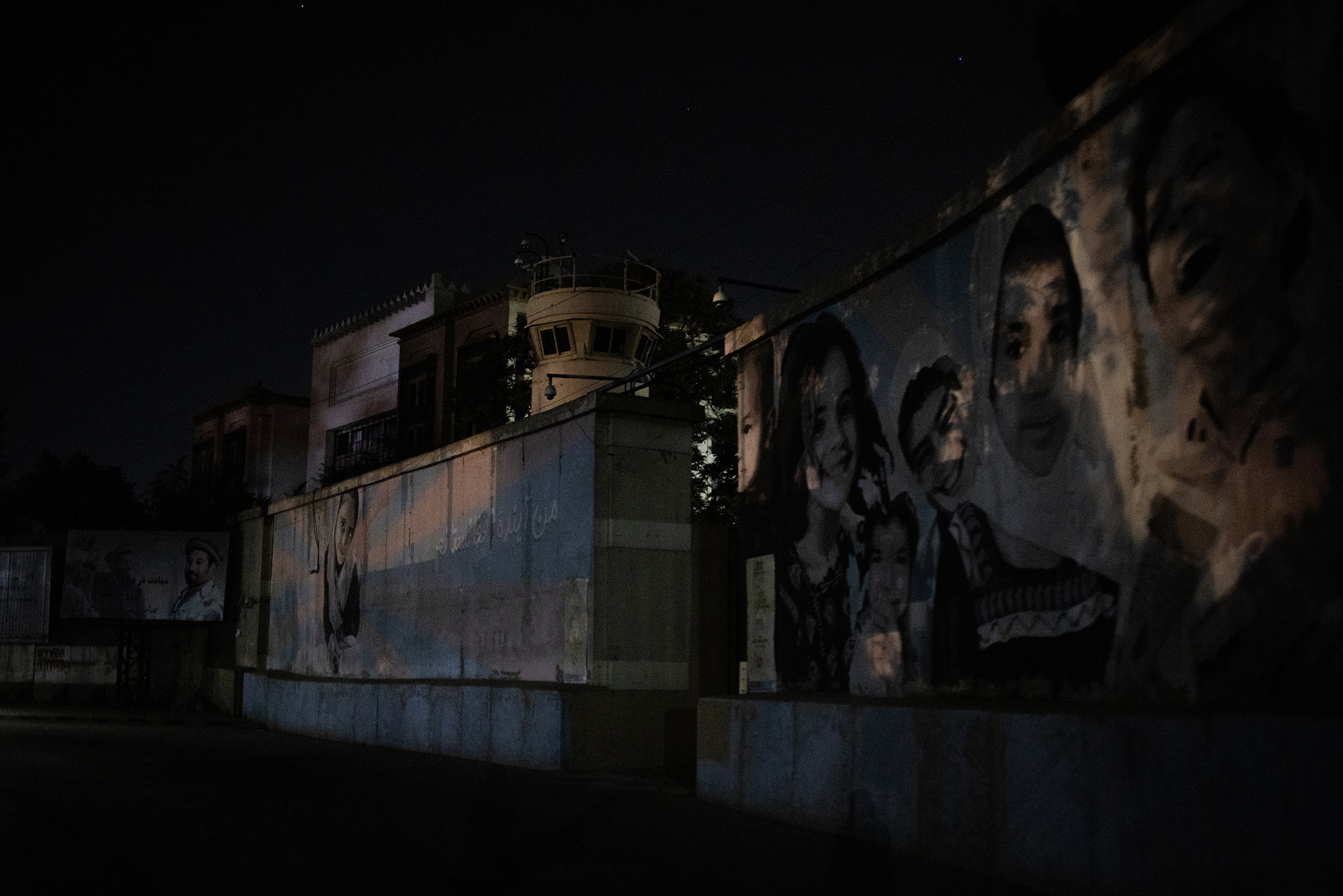The end was going to be painful. During the course of several administrations, the American public has grown tired of the war in Afghanistan and simply wanted it to end. The Biden administration decided to rip the bandage off, but unfortunately, it appears that they ripped off a tourniquet and we are watching the hemorrhaging of American honor and the death of the hopes and dreams of many Afghans—particularly for many girls and women.
How did we get to this point? Let me share my journey.
The war in Afghanistan began on September 11, 2001. I was a freshly selected one-star admiral, the gold braid brand-new on the sleeves of my service dress blue uniform. My office was on the outer “E-ring” of the Pentagon, and through the windows across the corridor, I glimpsed a Boeing 757 just before it struck the building. The nose of American Airlines flight 77 hit the Pentagon’s second floor. I was about 150 feet away on the fourth floor, and was spared.
As the flames and smoke engulfed the section of Pentagon with my office, I stumbled down several flights of stairs out onto the grassy field below and tried to do what I could for the survivors and wounded until the first responders arrived. All I could think of was the irony of the day for me: after decades in the military, I had seen my share of combat—yet I was almost killed in what we all believed was one of the safest buildings in the world. The Pentagon is guarded by the strongest military on earth in the capital of the richest and most powerful country on the planet. Yet it was there where I came the closest to being killed over the course of my 37-year career.
And I did not know it at the time, but the terrorist strikes on New York and Washington were also connected to a previous attack I had conducted several years earlier. As a destroyer squadron commodore, I had overseen the Tomahawk cruise missile strikes in August 1998 against bin Laden in Afghanistan, conducted in retaliation for Al Qaeda’s deadly bombings of two U.S. embassies in East Africa. In what became known as “Operation Infinite Reach,” we had barely missed killing bin Laden as he escaped his camp, probably after being alerted to impending attack by the Pakistani intelligence services. My Tomahawks had almost killed him, and now his attack nearly finished me.
Within weeks, I was placed in charge of the Navy’s “Deep Blue” innovation cell, a small elite team charged with coming up with strategic ideas and tactical operations to leverage the capabilities of the Navy in what would become known as the “Global War on Terror.” After a year in that role, I was sent back to sea as a Carrier Strike Group commander embarked in the nuclear carrier U.S.S Enterprise—conducting operations on the Horn of Africa and in both Afghanistan and Iraq. Later, I’d serve as Senior Military Assistant to the Secretary of Defense, Donald Rumsfeld, and eventually become Supreme Allied Commander of NATO, with strategic responsibility for the war in Afghanistan.
I was thus deeply engaged in what came to be known as the “Forever Wars,” from their start in 2001 in Afghanistan, throughout the tragic misadventure in Iraq, until my retirement from the Navy as NATO commander in 2013. All of the U.S. armed forces were profoundly changed by the experiences in both Afghanistan and the war in Iraq that followed. Today, I watch with great sadness the chaotic withdrawal of U.S. troops and diplomats from Afghanistan and the fall of Kabul.
What did it all mean, and what lessons should the U.S. military draw from this long conflict?
Over three thousand U.S. and allied dead, tens of thousands with significant wounds, and a few trillion dollars expended—to say nothing of hundreds of thousands of Afghans killed and wounded as well. Was it worth it?

In some ways, every war is a tragic waste of time, treasure and, most importantly, blood. But I believe that the troops who fought in Afghanistan can hold their heads up with pride in one crucial way: we were sent to Afghanistan to find and bring to justice the 9/11 attackers, and—more importantly—to prevent another attack on the U.S. homeland emanating from that ungoverned space. For twenty years, we did that. Those troops stood on a wall on the other side of the world defending our nation.
And the gains in Afghanistan—part of our counter-insurgency strategy—are not insignificant. Millions of people can now read and write, many of them girls and women. Life expectancy has increased dramatically, while child mortality is significantly down. Access to information, tech start-ups, better infrastructure and medical treatment are real, although much is at risk as the Taliban seize power.
On the other hand, I signed 2,026 letters of condolence to the families of those killed under my NATO mission. Almost a third of the letters, by the way, were sent to European and other coalition families. To those families I would say their loved ones fell in the service of a meaningful mission for their fifty different nations. But I would also say we could have done better, lost fewer of them, spent far less treasure, and used some of the lessons from Vietnam (and previous wars in Afghanistan) that could have helped. We could have done a better job of communicating to the people of our country and the people of the country in which we were fighting our goals and aspirations. We also could have done much better in marshalling and accounting for our resources and guarding against corruption and waste. We could have checked our hubris and optimism at the door, especially after the initial successes seemed so easy.
The bottom line: the financial and human costs of U.S. involvement were immense and will be felt for decades both economically with the U.S. debt and in terms of long-term medical care for wounded veterans.

In the immediate aftermath of the 9/11 attacks, all of the armed forces recognized the need to change fast. The hulking platforms of the Cold War, upon which we continued to invest a great deal of financial and operational resources, were suddenly far less relevant. Main battle tanks and motorized howitzers, fifth generation fighter jets, nuclear-powered aircraft carriers, offensive cyberattack programs, and anti-aircraft missile batteries were of limited use in Afghanistan.
Instead, we needed heavily armored but light vehicles that could move fast on the dusty roads and survive an encounter with an improvised explosive device. We didn’t have them, and Rumsfeld was nearly fired for saying (correctly and honestly but unempathetically) that “you go to war with the army you have. They are not the army you might want or wish to have at a later time.” At the start, we were wishing for those armored Humvees, alongside more nimble special forces, explosive ordnance disposal technicians, counter-insurgency experts, translators, and central Asian historians. The venerable A-10 “warthog,” a troops-in-the-field support aircraft that flew low suddenly counted for more than a glamorous F/A-18 Hornet. In short, the services had to reinvent, reorient, and rethink every aspect of combat.
And from the earliest moment, it was clear we would need to train a substantial Afghan army and police force if we were ever going to succeed in Afghanistan. That effort began early, even as we gradually increased the number of U.S. troops in country. The U.S. forces put enormous effort into the training, sending top generals like Dave Petraeus and Marty Dempsey (a future Chairman of the Joint Chiefs) as 3-star officers to helm that effort. Eventually well over a million young Afghans would pass through U.S. and allied training programs (which included literacy training). We succeeded in bolstering the technical proficiency of Afghan forces but at times fell short in our efforts to root out corruption among some sectors and were unable to adequately communicate our vision of a peaceful and prosperous future for the country. The lack of literacy, which was a profound problem throughout the country, was a significant hindrance. We underestimated the degree to which the Taliban were able to infiltrate the ranks, eventually leading to “green on blue” attacks by Afghans on their trainers. And so many of the Afghans would go through training for a time, take the salaries while doing so, and simply disappear back to their villages.
Another part of the learning curve was discovering how best to fight with allies in the field. The rest of NATO, acting for the first and only time in its history under the auspices of its Article V (“an attack on one is an attack on all”), came with us into Afghanistan. By the time I took command of what became known as Operation Enduring Freedom (OEF) in the spring of 2009, we had over 70,000 U.S. troops, and around 35,000 NATO and coalition forces. The frustrations of coalition warfare are immense, from poor communications interconnectivity to caveats placed on forces (nation X will not conduct operations at night, for example). Despite all the disconnects, however, we learned over time that Sir Winston Churchill was right when he said the only thing more frustrating that fighting alongside allies is fighting without allies.
Central to all of this was the U.S. military leadership in the fight. The on-the-ground leaders in Afghanistan, mostly Army and Marine Corps, were overwhelmingly brave, thoughtful, and competent. But as we learned over the long years, we simply rotated them too frequently. If we had fought World War II by limiting General Eisenhower or Admiral Nimitz to one year tours of duty, the outcome would have been different, to say the least. We made the same mistake in Vietnam, where everyone was on a one year tour, and the outcome was a disaster. This was reflected up-and-down the chain of command, and the lack of continuity and sense of “I’ve just got to make it to my departure date” hindered strategic coherency badly.
Two examples: Working for me as the four-star general during my four years as the overall NATO commander of the mission were four separate officers: Stan McChrystal, Dave Petraeus, John Allen, and Joe Dunford. All were devoted to the mission and worked 18 hours a day; but the changes of command were simply too frequent as command philosophy and tactical approach changed. In another example, we brought in a brilliant one-star, H.R. McMaster (later national security advisor for Donald Trump) to combat Afghan corruption. Just as he started to get real traction on this central challenge in the country, it was time for him to rotate out. This pattern of one year tours—understandable from a human perspective—deeply hurt the military effort. It is not an exaggeration to say we didn’t fight a twenty year war, but rather twenty one-year wars.
Finally, we need to acknowledge the tenacity, innovation, resilience, and relentless tactics of the Taliban. In any war, as the saying goes, the enemy gets a vote. The Taliban used all the attributes of successful insurgencies: terrorizing the civilian population, attacks on critical infrastructure, undermining the economy, harassing raids on larger forces, infiltration of Afghan units, and simply outlasting the patience of the U.S.
It was all quite reminiscent of the campaigns by their ancestors against the Soviets in the 20th century, the British in the 19th century, and all the way back to Alexander the Great in ancient times. “The Americans have the watches, but we have all the time,” was their mantra, and in the end, time ran out for the Americans. Like in Vietnam, the U.S. forces were never defeated on the battlefield—but as a North Vietnamese general pointed out to American general after the war “that is true; but it is also irrelevant.” All of this is so predictable in hindsight, of course. So the central question becomes simple: why did we not learn from this history?
American optimism is both one of our greatest strengths and at times one of our greatest vulnerabilities. We believe that because our motives are usually good and people and weapons are strong that we can overcome any obstacle. And we can. But what we too often fail to accept that doing so may take far longer than we’d like. It makes no sense to tell the inhabitants of a country that has suffered violent conflict for centuries that we consider twenty years a “forever war.”

The debates over “who lost Afghanistan,” are just beginning. As was the case in Vietnam, there are plenty of suspects according to various analysis, from supposedly bumbling generals and admirals to weak-kneed diplomats to drug lords to discouraging media reporting to feckless Afghan politicians to nefarious Pakistani intelligence operatives. History will sort that out.
But what interests me are the lessons we could and should take away. There are principally four.
First, we must learn and understand the history, culture, and languages of any country in which we seek to intervene – be that militarily or economically. In Afghanistan, we failed to fully do so, and our hubris and arrogance did not serve us well. Fighting an insurgency is a long game indeed, and we did not heed the historical need for patience –the opposite of unwarranted self-confidence. And the endemic corruption on the part of the Afghan government at every level hurt us badly, but we did not do enough to root it out.
Second, constantly turning over forces hurts badly. The Army and Marines generally had 12 month tours in country, the Navy normally six months, and the Air Force often less than that. Special forces would cycle in-and-out of country every few months. All of that is understandable from a human perspective, but it hurt us badly in terms of continuity and expertise.
Third, we did not quickly and efficiently adapt our technology to this new fight swiftly enough. For example, it took us far too long to find solutions to the improvised explosive device challenge, improve satellite intelligence delivery to remote battlefields; procure simpler aviation systems that could be adapted to the rigors of Afghanistan and the relatively unsophisticated Afghan maintainers; and create better communication systems between different national forces. In retrospect, we should have trained an Afghan fighting force that would have looked more like the Taliban – light, swift, less reliant on heavy logistics and exquisite intelligence, and air power.
Lastly, we did not create the conditions on the home front that could have sustained a truly long-term effort. As casualties dropped while we withdrew the vast majority of troops under President Obama, the war in Afghanistan simply fell off the media and national radar. Across multiple administrations we failed to communicate why our presence in Afghanistan was still useful and what benefit the US and our allies derived from the expenditure of lives and treasure. The opportunity to “bring all the troops home” touted as a campaign talking point by Trump (although 95% of the 150,000 had long since returned) was a hollow but alluring call. Keeping a small footprint (down to 2,500 by the time Biden took office) would have made sense, but by then political patience had expired.

And so we come to the end—of U.S. military involvement. How will things turn out?
It is hard to construct a positive scenario. With luck, the future under Taliban 2.0 will be somewhat less apocalyptic than the earlier edition but we can’t count on that. But the gains for women and girls are in serious jeopardy (to say the least) and terrorist groups that once found Afghanistan a welcoming environment are likely planning 9/11 anniversary reunions of the worst possible kind. Jihadis globally will be doing high-fives at the symmetry of two “great triumphs” twenty years apart— the fall of the World Trade Towers and the fall of Kabul.
While progress has been made in getting many of the Afghan translators and their families who worked with us out of the country, it does not appear to have been well planned or thought through—much more should have been done sooner. There are thousands of other Afghans who worked with the U.S. military, intelligence and diplomatic communities who are similarly at risk. Additionally there are those who supported U.S. contractors and media organizations who likewise will be targeted by the Taliban. We should help them escape as well, but it may be too late for many of them. A small silver lining in all of this, by the way, will be how those refugees from Afghanistan turn out here in America. I predict they will flourish— much as the South Vietnamese who escaped the purges in the mid-to-late 1970s have done.
For years the United States was somewhere between excessively optimistic and near delusional about what was possible to achieve. And as things got worse, we found ourselves whistling past the graveyard of empires. The Biden Administration and the Trump Administration before it began loudly signaling that the U.S. was anxious to get out of Afghanistan for better or worse. That message was received both by the Taliban and the Afghan government speeding the collapse.
The new actors taking up their parts on this most ancient stage are clearly going to be the Chinese, Iranians, Pakistanis, and —alongside their partners, the Taliban. It is their neighborhood, after all.
Sadly, Operation Enduring Freedom was neither enduring, nor did it deliver freedom for the Afghan people. It did buy two relatively terror-free decades here in the United States—and for that we can thank the U.S. and Allied Forces who risked it all for us in that country. But clearly we need to relearn the lessons of history and apply them in any future intervention, or we may again find failure awaiting us when we come to the end of our next major overseas engagement.
More Must-Reads from TIME
- Caitlin Clark Is TIME's 2024 Athlete of the Year
- Where Trump 2.0 Will Differ From 1.0
- Is Intermittent Fasting Good or Bad for You?
- The 100 Must-Read Books of 2024
- Column: If Optimism Feels Ridiculous Now, Try Hope
- The Future of Climate Action Is Trade Policy
- FX’s Say Nothing Is the Must-Watch Political Thriller of 2024
- Merle Bombardieri Is Helping People Make the Baby Decision
Contact us at letters@time.com